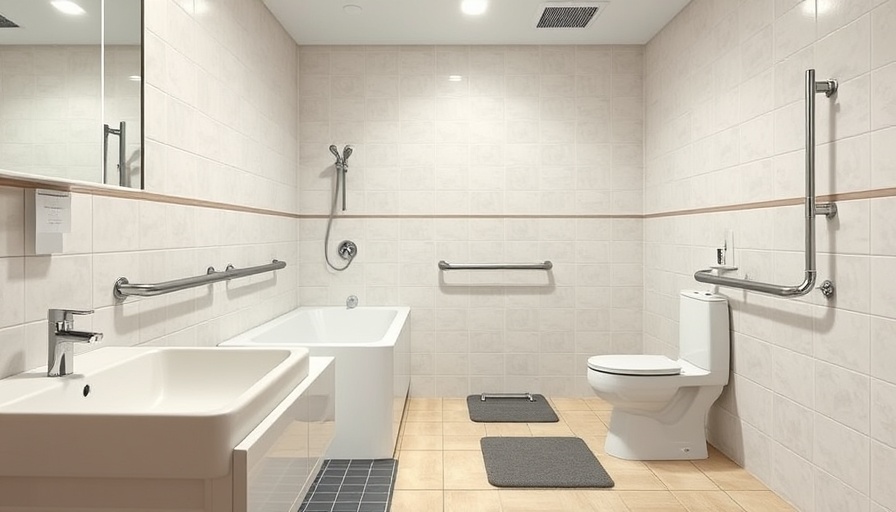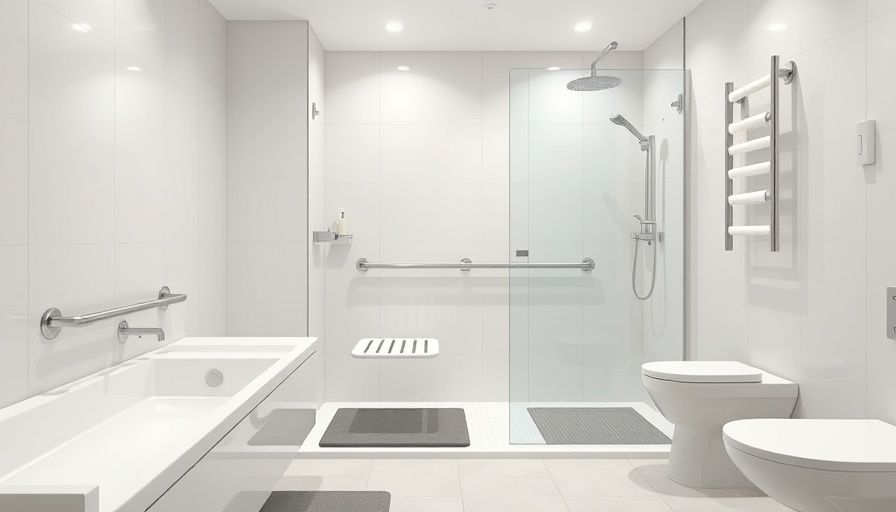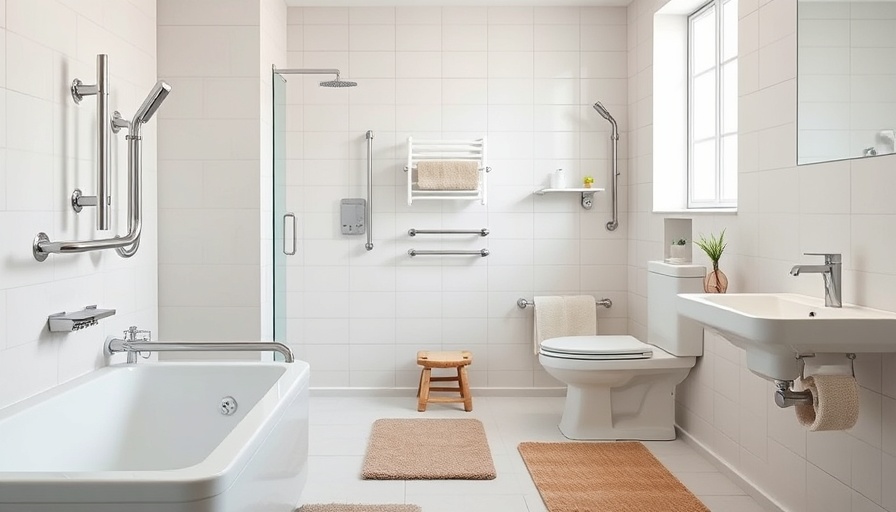
Why Bathroom Falls Are a Critical Concern for Seniors
As Toms River's population continues to age, preventing bathroom falls has become an essential topic for seniors and caregivers alike. The bathroom is notoriously hazardous, ranking as one of the most dangerous rooms in a household for older adults. Simple tasks such as using the toilet, bathing, or transitioning from standing to sitting can lead to severe injuries, resulting in long-term consequences that affect mobility and independence.
The unique risks in a bathroom stem from various factors, including slippery surfaces, confined spaces, and health-related issues that seniors often face, like diminished strength and balance. Understanding these dangers is a vital initial step for caregivers aiming to forge a safer environment, enabling proactive measures.
Cognitive and Physical Challenges That Increase Fall Risks
Seniors often grapple with underlying health conditions such as arthritis or visual impairments that can heighten their fall risk. Pain or discomfort while performing bathroom activities can lead to hesitation and result in dangerous situations. Caregivers must identify these challenges and adapt the home environment to ensure safety and confidence during these daily tasks.
A proactive approach might involve discussing these concerns openly with seniors to assess their physical limitations and cognitive capacity. By doing so, caregivers can better tailor bathroom modifications that resonate with individual needs, ultimately minimizing risks associated with functional limitations.
Key Safety Equipment Recommendations
Investing in the right safety equipment can significantly lower the likelihood of bathroom falls. One of the most effective tools is the installation of grab bars near the toilet and tub. Not only do these bars offer crucial support during transitions, but when positioned correctly—ideally by a professional—they can greatly enhance seniors' safety when using these facilities.
Non-slip bath mats are another essential item. Placing these mats in the tub, as well as outside it, provides seniors with additional stability on wet surfaces. Selecting mats that adhere firmly to the floor without slippery edges is critical. Furthermore, anti-slip treatments for slick bathroom floors can serve as extra layers of protection.
Consider utilizing shower chairs that allow seniors to sit comfortably while bathing. This simple addition can significantly reduce the risk of falling, fostering a safer bathing experience. Replacing traditional showerheads with handheld versions also allows for seated bathing, promoting ease and comfort.
Designing a Safer Bathroom Layout
Design and layout play crucial roles in a bathroom’s safety. Caregivers should begin by assessing the existing space for possible improvement. Crowded confines can inhibit movement, making it challenging for seniors who might rely on walkers or wheelchairs.
A straightforward way to enhance accessibility might involve converting a conventional tub into a walk-in shower, which allows for easier access. Implementation of wider entryways may also facilitate smoother navigation for seniors. Implementing small but impactful modifications not only improves safety but also empowers seniors to maintain their independence.
Community Resources for Seniors and Caregivers
To effectively tackle the risk of bathroom falls, it’s beneficial for seniors and caregivers to tap into local resources. In Toms River, various community programs focus explicitly on aging in place safely. Engaging with local organizations can provide access to trained professionals who specialize in home modifications for seniors. They can offer personalized assessments and hands-on assistance in implementing safety solutions.
Additionally, workshops dedicated to educating caregivers about fall prevention techniques and tools can increase awareness and preparedness. Peer support groups also offer vital emotional resources, connecting individuals who share similar experiences and concerns.
Next Steps for Caregivers
Awareness is just the first step in fall prevention for seniors. By incorporating actionable insights from this guide, caregivers can effectively transform bathrooms into safer havens. Consider scheduling an assessment with a home safety consultant to evaluate your bathroom for potential hazards.
Furthermore, foster open communication with the seniors you care for about their needs and daily challenges in the bathroom. Encourage them to voice their concerns to build a collaborative approach toward a safer living environment.
With the right equipment, layout adjustments, and community support, we can work together to prevent accidents, ensuring seniors in Toms River maintain their dignity and independence. Remember, a safer bathroom can redefine daily living for our beloved seniors, allowing them to age in place comfortably.
 Add Row
Add Row  Add
Add 




 Add Row
Add Row  Add
Add 

Write A Comment